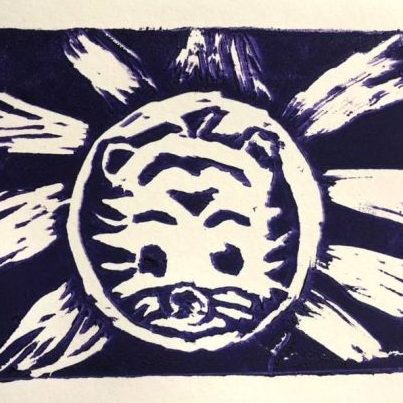Social and Emotional Learning, or SEL, is an important part of any child’s development. Schools are increasingly focused on educating the whole child, which includes these skills. As an art teacher, you have a unique opportunity to support personal expression in many of your projects. There are several ways to include social and emotional learning in your teaching.
Although you are already a champion for creative expression, some of the issues and feelings your students may bring up could be beyond your expertise. Check-in with your school counselor for feedback, ideas, and to collaborate on projects that can support your students’ social and emotional learning. My former school counselor, Kelly Albrecht, now at Germantown Hills Elementary School in Germantown Hills, IL. was a wealth of knowledge and suggestions when I went to her seeking some clarification on SEL.
Here are just some of the ways to incorporate SEL into your classroom:
1. Personal Narratives
Throughout history, artists have used their visual creations to express a narrative about themselves. Looking back as early as the first cave paintings, artists were drawing and painting scenes from daily life. The Egyptians shared depictions of important events, as well as their beliefs about the afterlife.
Modern and contemporary artists have created art to reflect on historical events, popular culture, and more personal accounts of love, loss, and every emotion in between.
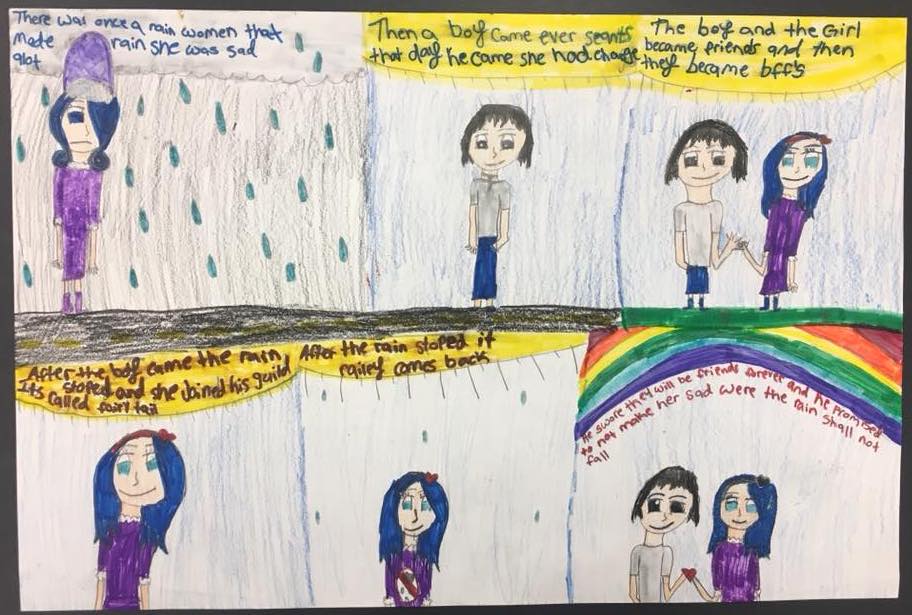
Students can express their own narratives in a variety of creative ways. Asking them to simply create a personal narrative may be too open-ended and intimidating to start. Comic strips can be a great place to start and give students a reference for inspiration.
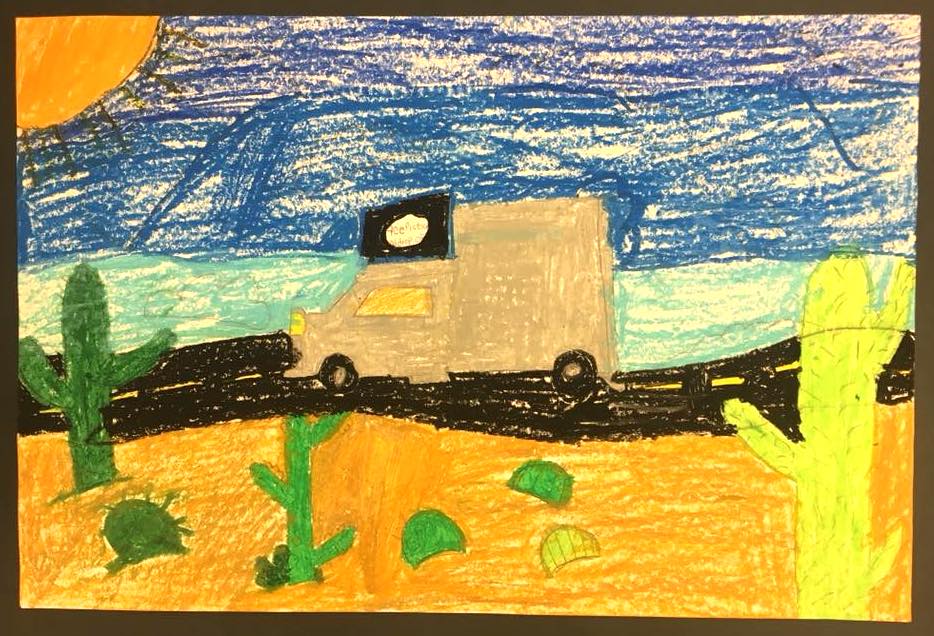
Bring in examples of comic strips and graphic novels to show students how the artist moves a story forward with each frame. They will need a beginning, middle, and end to a story about themselves. Think of some prompts that may spark an idea for your students, or better yet, brainstorm with your class!
- My First Day of School
- A Time When I Was Surprised
- A Time When I Was Scared
- My Favorite Vacation
- The Day I Discovered ________
- My Best Memory from ______ Grade
2. Protection Animals
Students at every grade level have worries, fears, and concerns. These feelings can cause lasting anxiety throughout the day and make it difficult to focus in class.
Allow your students an opportunity to design a protection animal that will fight off any of those worries and keep them safe. This is more of an exercise for students to use their imagination. Hopefully, they can focus their attention away from their worries and replace them with this creative outlet. You may help your students get some temporary relief from the concerns they carry with them each day.

Ask your students to think of an animal that they may relate to. Encourage them to imagine an animal who is brave, strong, and smart. Each student should design a character specific to their own personality, interest, and concerns.
Begin the assignment by encouraging your students to think of something that worries them, and to write it down at the bottom of their paper. Once they have their worry written, ask students to think of an animal that can help protect them. What characteristics does their animal possess? Does it have large wings to carry it away from danger? Sharp teeth or claws to fight away predators? Maybe the animal has special abilities like a chameleon to disguise itself. Brainstorm with your class of animals and the physical traits that may help protect them from danger.
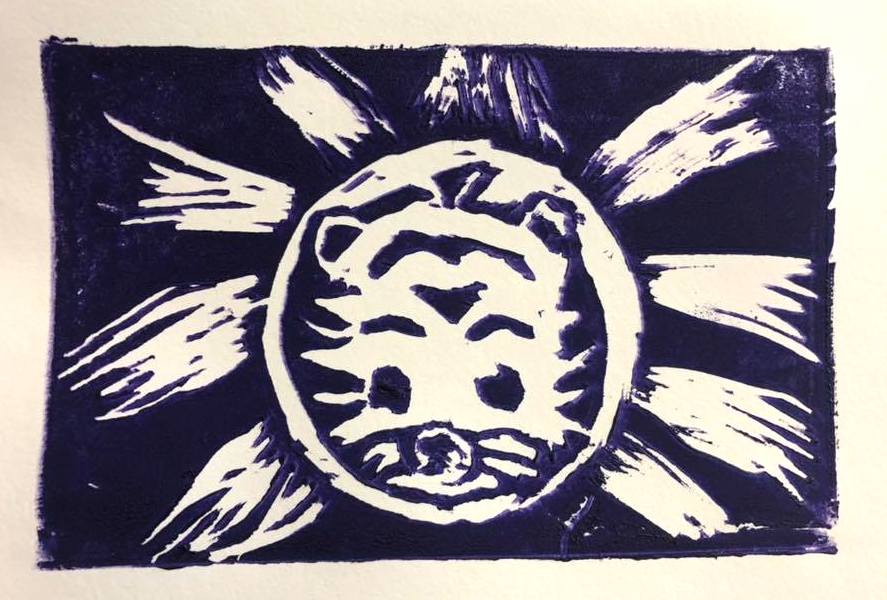
Have each student design a protection animal towering over their small worry word. This could be addressed in a variety of art media. You could have students do a simple drawing, a series of prints, a painting, or a clay sculpture of their protection animal. Encourage students to imagine their animal anytime they are worried, and to think of their own special abilities.
3. How I’m Seen vs. Who I am Portraits
Older students can have a hard time facing bullying and stereotypes as they navigate through school. One way you can help them express their feelings on this topic in their artwork is to create a portrait that reflects how they are seen by others versus who they actually are.
This can be a fun and eye-opening project for your students, and add a little more interest to your portrait unit. Ask students to split their composition down the middle of the page.
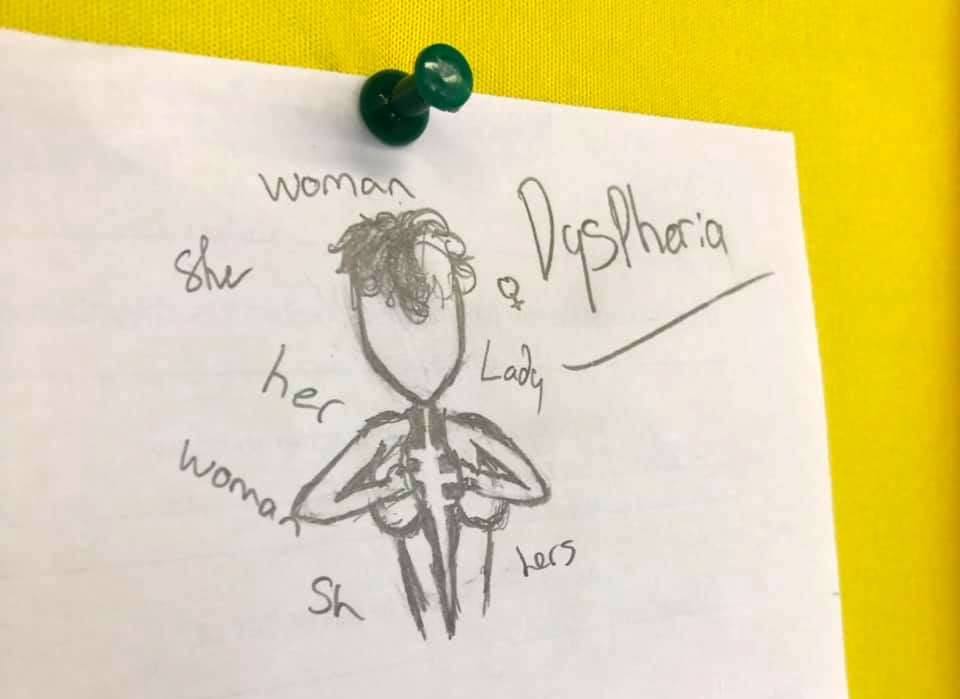
On one side of the portrait, students will depict themselves the way they believe others see them. This may result in a change of appearance, clothing, expression, etc.
On the other side of the portrait, students will depict themselves as who they truly are. This may be just as surprising, as students may hide how they actually feel from others.
Both sides of the portrait will allow students to express their feelings about themselves, others, and stereotypes. Students may learn from one another and make connections to their classmates who feel the same way.
4. Symbolic Events
Many students are carrying the weight of traumatic events with them every day. You may know of students who are suffering the loss of a family member or struggling with their parents’ divorce. Other events you may never know about because the student keeps their feelings private.
Art can be a helpful tool in dealing with these events. You can provide an opportunity for students to express themselves abstractly, and not have to spell their feelings out precisely. This gives your shy students some anonymity, but still provides them a creative outlet for these feelings.
Ask your students to think about an event in their life that made them feel a particular emotion. You can use the Pixar movie, Inside Out, as an example of our different human emotions: sadness, joy, disgust, anger, fear, etc.
Once they’ve thought of their emotion, they can think of abstract ways of representing that feeling. Through color, line, mark-making, and symbolism. Show them examples of Picasso’s blue and rose periods for color symbolism.
5. Finger Meditation Labyrinths
You may already know about labyrinths as an exercise in mindfulness. These paths have been used throughout history for meditation, relaxation, and prayer. Not to be confused with a maze, a labyrinth has a single, spiraling path to the center.
Students can find labyrinths calming as well. A finger meditation labyrinth is a small drawing to trace over with your finger. You follow the path with your finger just as you would walking through a stone or garden labyrinth. As you trace the path, you try to clear your mind, take deep breaths, and observe your own emotions. This is a practice you can share with your students!
To take this exercise one step further, you could have students design their own finger meditation labyrinths. This would be a great project to incorporate when you are talking about line and the elements of art. Students would design their spiraling labyrinth to use as needed or share with their classmates. If weather permits, you could also have students draw large labyrinths with sidewalk chalk outside. Instead of tracing the path with their finger, students could actually walk through the labyrinth and practice mindfulness exercises.
Learn more
Social-Emotional Learning PRO Learning Pack
Strategies to Support Social and Emotional Learning (Ep. 188)
How to Create a Calm Down Corner in 5 Easy Steps
Final Thoughts
Social and emotional learning is a huge part of your students’ lives. While many of these skills may be learned at home, or in general education classrooms, art teachers have the unique opportunity to encourage self-expression through creative projects and activities. Work with your school district counselors to best serve your students’ social and emotional needs the feelings they choose to share with you and their peers in their artwork. Working through these emotions in art may be just what they need!
What social and emotional skills do you incorporate into your curriculum?
How do you encourage students to express their emotions through art?
How do you practice mindfulness with students?
Magazine articles and podcasts are opinions of professional education contributors and do not necessarily represent the position of the Art of Education University (AOEU) or its academic offerings. Contributors use terms in the way they are most often talked about in the scope of their educational experiences.
